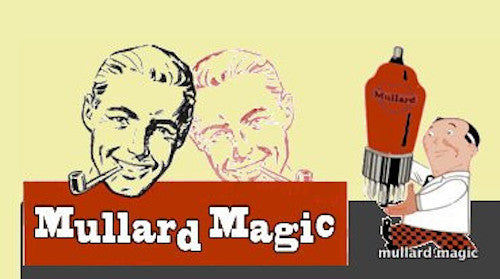| Beginnings |
1920s and 1930s |
In 1922, Raytheon is founded as the American Appliance Company, a maker of machinery, motors and components. In 1930, Texas Instruments (TI) is founded as Geophysical Service, Inc. a provider of contract exploration services to the petroleum industry. In 1932, Hughes Aircraft is created as a division of the Hughes Tool Company, with a focus on military aircraft research and design; Beech Aircraft is established that same year. In 1945, the Texas Engineering and Manufacturing Company (TEMCO), precursor to E-Systems, is founded.
|
| World War II Years |
1940s |
Raytheon meets urgent production needs for magnetron tubes used by Allied forces for radar defense, and produces the Sea Going microwave surface search radar that went on every U.S. Navy ship. The SG provided vital situational awareness in the major battles in the Pacific and helped eliminate the submarine menace in the Battle of the Atlantic. TI also produces magnetic anomaly submarine detection devices for the U.S. government, and shortly after the war receives its first airborne radar system contract. Hughes plays a key defense role by producing more than 1 million feet of its flexible Ammunition Feed Chute for aircraft, and developing the XF-11 Photoreconnaissance Plane. Beechcraft produces 7,400 planes for U.S. and Allied forces; around 90 percent of all U.S. Army Air Corps bombardiers and navigators are trained in Beechcraft AT-7 and AT-11 planes.
|
| Birds of Prey |
1940s |
As America re-arms after the war, Raytheon, Hughes and TI fill the skies with a new generation of guided missiles … all named after birds, including Raytheon's Lark Missile, Sparrow III (AIM-7) Missile, and HAWK (MIM-23) Systems; TI's Shrike Missile (AGM-45); and Hughes' Falcon (AIM-4) Missile. In 1947, Beech introduces a magnificent bird of its own: the Model 35 Beech Bonanza, a high-performance, single-engine, business airplane that's still being made to this day, extending its industry record for continuous production.
|
| Reaching New Heights |
1950s and 1960s |
In the 50’s and early 60’s, amazing innovations are everywhere. Raytheon's Lark Missile knocks a test drone out of the air, becoming the first missile-mounted guidance system and continuous wave radar capable of intercepting moving objects. TI leverages its knowledge of silicon transistors to invent the integrated circuit, enabling the digital revolution and forever changing the world. Hughes launches the first geosynchronous communications satellite, enabling Americans to watch live coverage of the 1964 Tokyo Olympics, a landmark in global broadcasting. Beech introduces the Model 90 Beech King Air, which quickly establishes itself as the industry standard in corporate jet props. After several mergers and acquisitions, TEMCO becomes known as LTV, the company that would spin off E-Systems just over a decade later.
|
| To the Moon |
1960s |
The 1969 lunar landing captures the world's imagination, and Raytheon, TI and Hughes all play key roles. Earlier in the decade, the Hughes-built Surveyor spacecraft completes the first successful soft lunar landing, paving the way for the Apollo flights to follow. For Apollo 11, Raytheon builds the computer that guides the space vehicles in their journey, and its on-board microwave tube transmits radio and TV signals to earth, enabling millions to witness history live. The Apollo Guidance Computer gained the reputation of the most reliable digital computer of its time as there were no failures of any type during the missions. And TI contributes precision switches, thermostats, transistors, and other critical semiconductor components to the program.
|
| Vietnam Era |
1970s |
The AIM-7F Sparrow enters production to improve dog fight capability. TI’s laser-guided bombs absolutely transform tactical air warfare, and the Hughes Tube-launched, Optically-tracked, Wire-guided (TOW) anti-tank missile demonstrates high effectiveness when introduced into combat.
|
| Modern Conflicts |
1980s and 1990s |
In the Persian Gulf War, Raytheon's Patriot Missile intercepts Iraqi Scuds fired at Israel and Saudi Arabia, becoming the first missile ever to engage a hostile ballistic missile in combat. TI's High-Speed Anti-Radiation Missile (HARM) and Paveway laser-guided "smart bomb" constitute 65 percent of air-delivered weapons used by Coalition Forces in Operation Desert Storm. Hughes develops its own state-of-the-art weapon system, the Advanced Medium Range Air-to-Air (AMRAAM) AIM-20 Missile. The U.S. Air Force selects the Beechjet for its T-1A Jayhawk program to train tanker and transport pilots; the company will eventually deliver 180 aircraft for the program.
|
| Raytheon Today |
2000s |
| Raytheon today is a unique technology company and a world leader in defense electronics, with a broader range of products, service and capabilities than ever before. The proud legacies of Raytheon, E-Systems, Texas Instruments, Hughes Aircraft and others have come together to form one company with one vision: to be the most admired defense and aerospace systems supplier through world-class people and technology. With the hard work and dedication of more than 72,000 employees, Raytheon is well-equipped to meet the needs of its customers in over 80 countries … today, tomorrow and well into the 21st century. |



